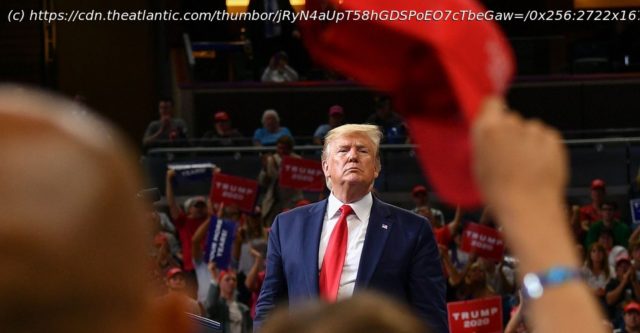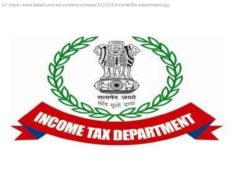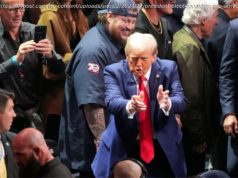Blue America is only growing.
Democrats turned over their convention keynote speech last night to a split-screen array of 17 diverse young leaders one day after news leaked that Republicans had invited to speak at their convention the white suburban couple who brandished guns at a multiracial group of Black Lives Matter protesters outside their St. Louis home in June. Even with all else that has happened during Donald Trump’s tumultuous presidency, there may not be much else you need to know about the lines dividing America in the 2020 presidential election. Despite a pandemic that has killed more than 170,000 Americans and cratered the economy, the latest surveys show Trump maintaining strong support among the white voters most uneasy about the demographic and cultural changes remaking America, particularly those who are evangelical Christians, live in rural areas, or lack a college degree. And despite a Democratic nominee who stirs only modest enthusiasm among many key party constituencies, those same polls show Joe Biden amassing big advantages among the groups most comfortable with those changes: young people, racial minorities, secular Americans, and college-educated whites. This division of the electorate leaves Biden holding a steady and substantial lead in national polling over Trump that matches or slightly exceeds the Democrats’ 8-percentage-point edge in the total national vote for the House of Representatives in 2018. But the uneven distribution of these contrasting constituencies across the battleground states means that Democrats will likely remain nervous through Election Day about their ability to win the Electoral College, even if Biden maintains a healthy lead in the popular vote. Last night’s proceedings were effectively a tribute to America’s growing diversity. The energetic, quick-cut keynote speech included multiple speakers who are Latino, Black, Asian American, Native American, and LGBTQ, not to mention several women. The brilliantly reimagined convention roll call reinforced the point, with brief testimonials—some somber, others endearingly goofy—from another diverse roster of speakers in every state and territory, a change that drew rave reviews on Twitter and TV news. Some Democratic activists complained that organizers had allocated too much of the event’s limited time to Republicans and too little to non-white progressive leaders such as Stacey Abrams and Alexandria Ocasio-Cortez. But average viewers probably absorbed a very different image: On a day when Trump delivered an incendiary speech in Yuma, Arizona, touting his border wall and even reprising the language from his 2015 campaign announcement about immigrants as “murderers” and “rapists,” Democrats offered the 21st century version of a Norman Rockwell painting. That contrast testifies to the depth and intractability of the modern American divide. Even as Democrats gather to nominate “Scranton Joe” Biden, whose supporters have long touted his ability to recapture working-class white voters, many indications suggest 2020 could cleave the electorate more deeply than ever before, with a diverse, more and more educated, culturally cosmopolitan, metropolitan-based “coalition of transformation” on the Democratic side and a preponderantly white, heavily blue-collar, Christian, non-urban “coalition of restoration” on the Republican side. The stark reality of that separation would test the bridge-building capacity of any president. Through the 2020s, tension is likely to grow between the diverse communities on display this week and the white constituencies that Trump is trying to mobilize by describing the BLM movement as a “symbol of hate” and by warning “The Suburban Housewives of America” that Biden will “destroy” the suburbs by allowing more low-income housing. If a majority of working-class and Christian white America responds to Trump’s openly racist appeals when they represent a little over 40 percent of the population, as they do today, there’s little to suggest they will be less responsive to such arguments as their share falls into the 30s, as it will inexorably within a few years. The flurry of pre-convention surveys shows a few unique twists to the 2020 matchup between Trump and Biden, such as Biden’s potential to run better among seniors than any Democrat since Al Gore in 2000. But mostly, the polling shows even further acceleration in the trends that have reshaped—and separated—the two parties’ coalitions since the razor-thin election of 2000. Despite all the controversies that have battered Trump’s presidency, especially his erratic response to the coronavirus outbreak, these polls show him retaining very solid support among his core groups. Surveys released since August 11 by Monmouth University, CNN, NBC/The Wall Street Journal, and ABC/The Washington Post all found Trump attracting between 57 percent and 60 percent of white voters without a college education.






